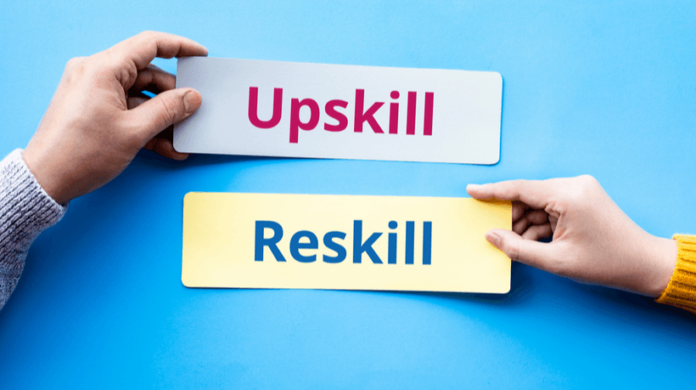Change is an inevitable part of life and it can be both exciting and overwhelming for many individuals. In today’s rapidly evolving world, businesses and organizations must develop strategies that focus on reskilling and upskilling their workforce to remain competitive.
This article will discuss the importance of embracing change, as well as provide tips on how to create a successful reskilling and upskills strategy for your business or organization. By understanding the need for change, exploring different methods of reskilling and upskilling, and creating effective strategies, you can ensure your business remains competitive in today’s economy.
But first, what are reskilling and upskilling?
Reskilling involves teaching employees new skills or expanding their existing knowledge to keep up with changes in the industry. Upskilling, on the other hand, is a process of improving current skills or learning new ones to move up within an organization or take on higher-level roles. Both processes are important for businesses to stay up-to-date and remain competitive.
What are some effective ways to reskill and upskill your workforce?
There are several training options businesses can use to reskill and upskill their employees. Here are some tips to help you create a successful training strategy:
- Use technology-based training programs, such as online courses or virtual training sessions, to teach employees new skills. This can be an effective way to cost-effectively reach a larger number of people in a shorter amount of time.
- Develop training programs tailored to specific departments or roles within your organization. This will enable your business to focus training sessions on topics that are relevant and useful for individual teams and roles.
- Hire training consultants who are knowledgeable in the field of training and development to help you develop an effective training strategy. They can provide valuable insight into current industry trends and best practices as well as suggest changes or additions to your training programs.
- Utilize professional development funds or grants to help cover the cost of training. This can be a great way to ensure your employees can get the most out of their training experience.
By understanding the need for change, exploring different methods of reskilling and upskilling, and creating effective strategies, you can ensure that your business remains competitive in today’s ever-changing world.
What are the benefits of reskilling and upskilling?
Reskilling and upskilling your workforce can have many positive benefits for your business. Here are some advantages:
- Improved employee morale and motivation. When employees are allowed to learn new skills, their confidence and job satisfaction can increase. This can lead to increased productivity, which is beneficial for your business.
- Greater flexibility in the workforce. As technology continues to evolve, upskilling allows businesses to be more agile and adaptive when it comes to changes in the industry.
- Increased competitiveness in the marketplace. By providing employees with the necessary skills to stay ahead of their peers, your business can remain competitive and attractive to potential customers or clients.
- Improved employee retention. Investing in reskilling and upskilling programs can help retain valuable employees who are looking to gain new skills or move up within an organization. This can save your business time and money in the long run.
- Reduces stress. When employees feel like they are not keeping up with the changing environment, it can lead to feelings of inadequacy and stress. Reskilling and upskilling programs can help reduce these feelings by providing employees with new skills that can help them keep pace with change.
By investing in reskilling and upskilling programs, your business can stay competitive and ensure that employees can keep up with the ever-changing environment. Furthermore, it can help improve employee morale, retain talented individuals, and reduce stress levels.
In conclusion, embracing change is essential for a business to remain successful in today’s economy. By developing effective strategies for reskilling and upskilling your workforce, you can ensure that your business is prepared for the future.
